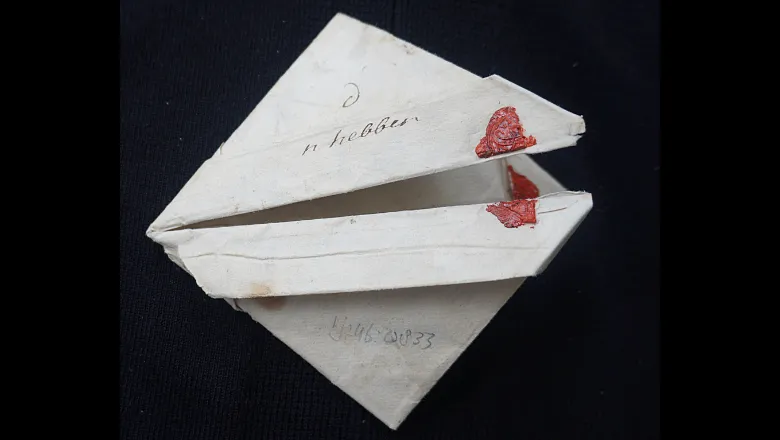It turns out that throughout written history people often put as much effort into locking their letters as they did in writing them. Whether writing about business, love, friendship, or state secrets, people have entrusted their messages to letters for millennia. With the techniques described in Letterlocking we can finally recognise and celebrate the creativity that went into keeping those messages safe in transit.
Dr Daniel Starza Smith, Senior Lecturer in Early Modern English Literature (1500-1700)
04 March 2025
How letters were kept secure for centuries before the invention of the modern envelope
For hundreds of years, if you wanted to send letters anywhere in the world, you would have to turn your letter into its own envelope using a combination of folds, cuts, locks, and adhesives – a practice called “letterlocking”.

This almost entirely forgotten practice, used by historical figures ranging from Elizabethan spies to Japanese feudal families, was an everyday activity for centuries, across cultures, borders, and social classes.
Now a new book, Letterlocking: The Hidden History of the Letter shows just how complex and secure those locking mechanisms could be – right down to concealed booby-traps and other tamper-evident devices. The book maps out a worldwide history of this technology, which stood at the heart of human communication for hundreds of years and which the authors say was in many ways the precursor to digital encryption used today to keep emails or text messages secure.
The research team has also discovered that letterlocking methods could be used to express personality and status – famous letterlockers with distinctive styles included the poet John Donne and Queen Elizabeth I of England.

Co-authors Dr Daniel Starza Smith, Senior Lecturer in Early Modern English Literature (1500-1700) in the Department of English, and Jana Dambrogio of the Massachusetts Institute of Technology Libraries (MIT Libraries), hope that letterlocking can be brought to light more in film or television programmes.
Their book highlights how Queen Elizabeth I and her secretaries used over a dozen kinds of locks, including the spiral lock, triangular-shaped packets, a ‘penguin-head’ locking mechanism, and even packets sewn through with thread. She also made a special effort to use certain kinds of folding in letters to specific people.
Methods such as the spiral lock were more secure so any attempt to tamper with it would be evident to the recipient. This suggests it was used when correspondence was particularly sensitive or where the sender suspected it would be intercepted, such as the final letter Mary Queen of Scots wrote and spiral-locked before she was beheaded. There is also evidence that how a letter was locked conveyed information about the sender’s class, maturity and level of education.
The team found that Elizabethan poet John Donne employed a type of letterlocking as inventive as his poetry. Writing from prison in 1602 he used a method involving folds and a hole in the paper through which sealing wax dripped, which has not been used by anyone else in the 250,000 letters studied by the Unlocking History research group.
The most original and daring poet of Elizabethan England was also locking his letters in original and daring ways.
Dr Daniel Starza Smith, Senior Lecturer in Early Modern English Literature (1500-1700)
American poet Emily Dickinson playfully wrote additional words on the wafers she used to seal letters as extra messages to her recipients. The book also highlights how Russian soldiers in World War II used triangular letter packets so the contents could be read easily by censors before being sent on to their intended recipient.
Letterlocking highlights the power of preserving historical artifacts; the skill in examining letters; and the thrill of discovering how the creases, tucks, slits, blobs of wax, and locks can serve as a guide to understanding how individuals folded their writing sheets into secure letterpackets. Letterlocking illustrates techniques used for thousands of years by the renowned and the unknown, revealing, in digestible steps, the fundamentals of this global communication phenomenon.
Jana Dambrogio Thomas F. Peterson (1957) Conservator for Massachusetts Institute of Technology Libraries
King's cannot be held responsible for videos from external sources.


